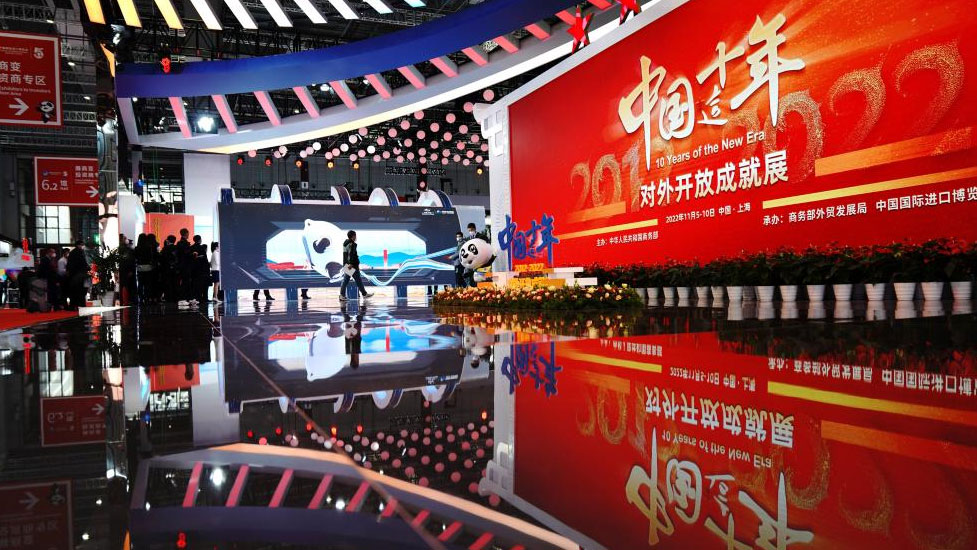China's carbon emissions reduction goals attract foreign firms
* China has announced that it will peak carbon dioxide emissions before 2030 and achieve carbon neutrality before 2060.
* More foreign enterprises have played an active role in achieving the country's "dual carbon" goals.
* China has also made significant strides in renewable energy production in recent years to improve its energy structure.
TIANJIN, Nov. 8 (Xinhua) -- With crisscrossing ducts and pipes, a massive waste heat recycling unit in Cabot's Tianjin plant is always eye-catching. It was among a series of efforts that helped the chemical enterprise win the title of a national-level "green plant."
"The unit recycles waste heat produced during the production process, which can supply 720,000 tonnes of steam and 100 million kilowatt-hours of electricity annually, reducing carbon emissions by about 228,000 tonnes," introduced Wang Xuebin, senior environment and sustainability manager of Cabot China.
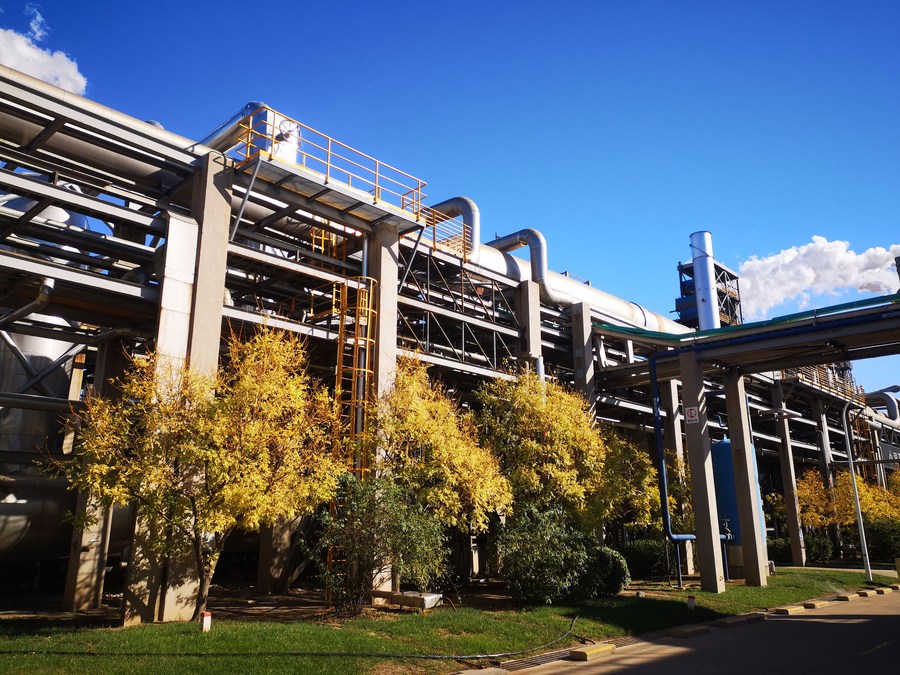
This photo taken on Oct. 10, 2022 shows a view of the plant of Cabot Chemicals (Tianjin) Co., Ltd. in north China's Tianjin. (Xinhua)
Cabot Corporation is a leading global specialty chemicals and performance materials company with nine manufacturing plants in China.
Its plant in north China's Tianjin Municipality was among the first group of enterprises participating in the carbon trading pilot of the city.
"The participation is a vital driving force for the company's sustainable development," said Wang, adding that the enterprise has been making efforts in recent years to improve industrial manufacturing efficiency and waste heat recycling and reduce carbon emissions.
"In the future, the Tianjin plant will also become Cabot's leading enterprise in carbon reduction process innovation as well as carbon neutrality," Wang said.
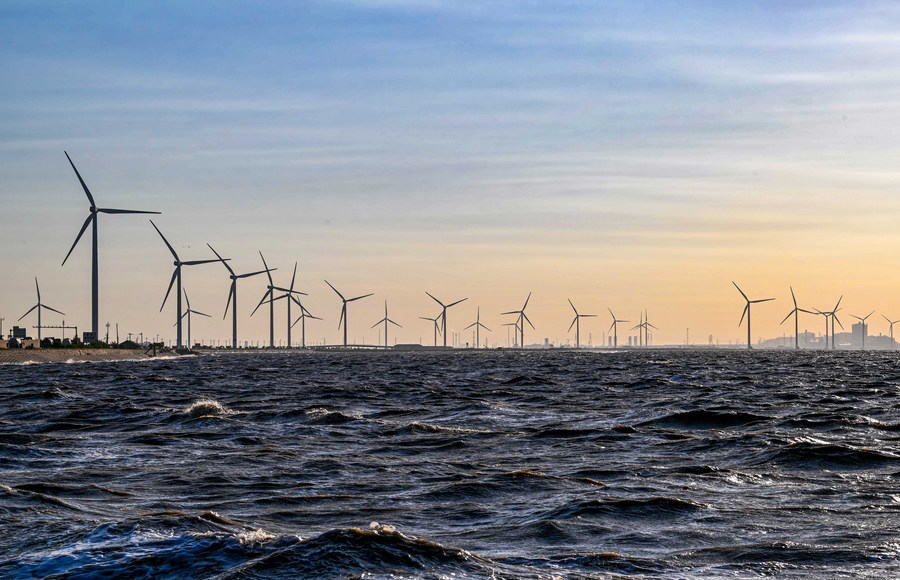
This photo taken on Sept. 1, 2022 shows a wind farm in the Tianjin Binhai New Area in north China's Tianjin. (Xinhua/Sun Fanyue)
China has announced that it will peak carbon dioxide emissions before 2030 and achieve carbon neutrality before 2060. Pressing ahead on a green development path, it has made every effort to live up to its promises.
Meanwhile, more foreign enterprises have also played an active role in achieving the country's "dual carbon" goals.
China has maximized the functions of its market-based mechanism to spur carbon-cutting endeavors. In July 2021, it launched a national carbon-trading market, the largest market of its kind worldwide and incorporated over 2,100 major power-generation companies.
Before the national carbon trading market, pilot programs on carbon emission trading had already started at local levels.
Tianjin began carbon trading in 2013. More than 130 emitters, including 15 foreign enterprises in diverse industries such as machinery and equipment manufacturing, steel, the chemical industry, building materials, and agricultural and sideline food processing, have been incorporated in the carbon trading platforms since then.
Data shows that all the participating emitters in Tianjin have seen their carbon emissions below the quota for seven consecutive years.
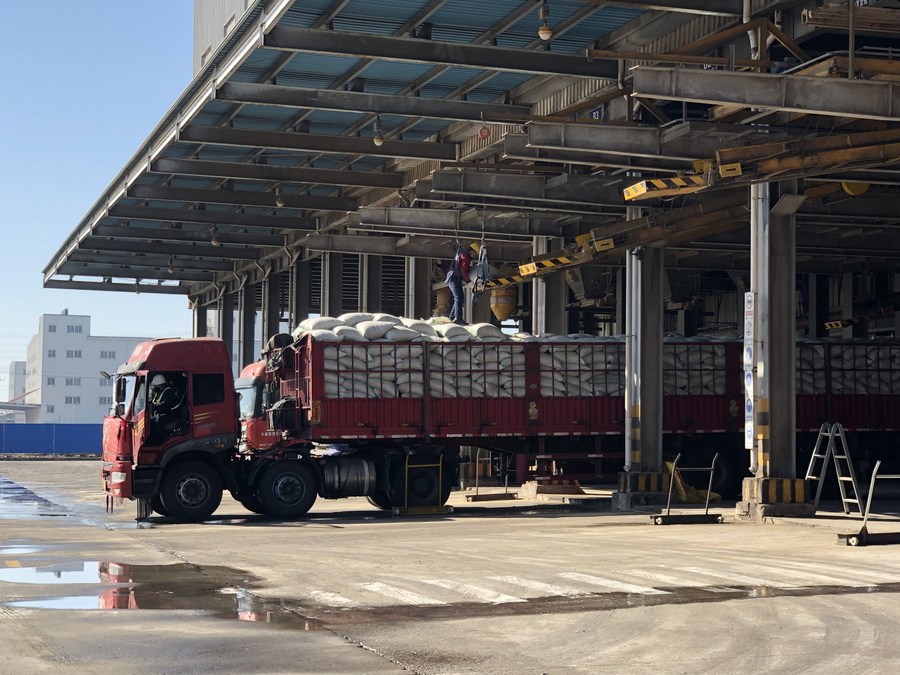
Employees of Louis Dreyfus Company (Tianjin) Food Technology Co., Ltd. load soybean meal onto a truck in north China's Tianjin, Feb. 18, 2020. (Xinhua/Song Rui)
The Europe-based Louis Dreyfus Company (LDC), a global merchant and processor of agricultural goods, has been in the Chinese market for nearly 50 years. LDC (Tianjin) Food Technology Co., Ltd., which can process 4,000 tonnes of soybeans and refine 1,200 tonnes of cooking oil daily, has joined the city's carbon emission trading scheme for one year.
Dai Yuran, carbon commercial director for Asia at LDC, said that the greenhouse gas generated by their Tianjin company was less than the baseline emission, and they successfully retired the allowances following the mechanism.
China is a primary market for LDC. The country's green and low-carbon transformation of its energy sources has also brought opportunities for the company, Dai said, adding that solar photovoltaic panels on the roof of its Tianjin plant generate about 1.5 million kilowatt-hours of clean electricity per year.
"Reducing carbon emissions is necessary for the company's transformation toward a safe and sustainable future. LDC will seize the opportunity to continuously improve our competitiveness," Dai added.
He said the company is committed to achieving net zero emissions by 2050.
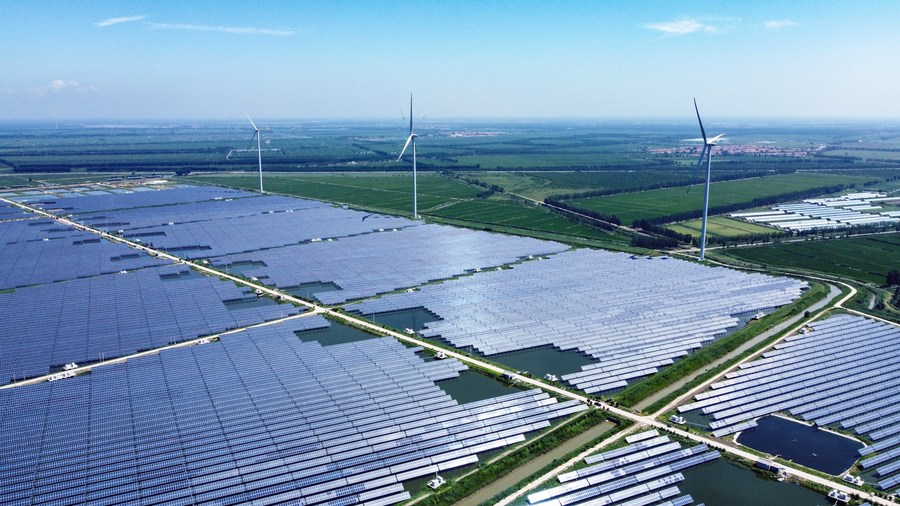
This aerial photo taken on July 18, 2022 shows a photovoltaic power station in north China's Tianjin. (Xinhua/Sun Fanyue)
In 2021, China's carbon dioxide emissions per unit of GDP dropped by 34.4 percent from 2012, and the share of coal in primary energy consumption fell from 68.5 percent to 56 percent during the period.
Apart from reducing carbon emissions, China has also made significant strides in renewable energy production in recent years to improve its energy structure.
In 2021, the installed capacity of renewable energy in China exceeded 1 billion kilowatts, with hydropower, wind power, solar power, and biomass power all ranking first in the world.
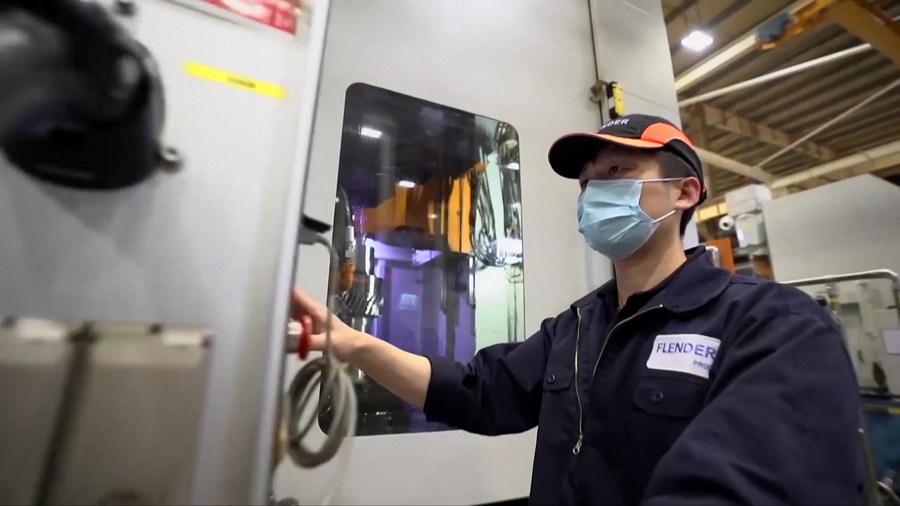
An employee works at a workshop of Tianjin subsidiary of Flender Ltd., China (FLC) in north China's Tianjin, July 29, 2022. (Xinhua/Yang Zichun)
"China's emphasis on renewable energy has created a vast market space for enterprises," said Gou Jianhui, chairman and CEO of Flender Ltd., China (FLC).
"Learning about the emerging wind power industry, FLC unwaveringly decided to increase investment in this field in China," Gou said, noting that the German firm recently launched the 10th phase of its capital increase and expansion project in its Tianjin subsidiary. The latest investment of 300 million yuan (about 41.5 million U.S. dollars) will go toward producing core components of wind power facilities.
Photos
Related Stories
- China to further promote green growth in building materials
- China strides towards "dual carbon" goal, says COP27 delegate
- China's progress toward goals of carbon peak, carbon neutralization remarkable: envoy
- HKEX launches new int'l carbon marketplace
- Understanding China's 'dual carbon' goals
- Huzhou of Zhejiang province builds low-carbon communities
Copyright © 2022 People's Daily Online. All Rights Reserved.







